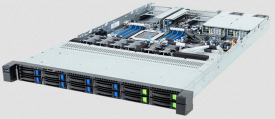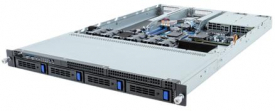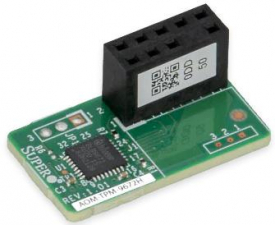Other factors affecting RAID performance (RAID Settings)
| F.A.Q. • SupportOther factors affecting RAID performance
When measuring the performance of a RAID subsystem, it is important to remove factors that may limit performance or cause performance fluctuations.
Battery Status (Backup Battery Status)
- When performing Write Back mode performance measurements, it is important to check the battery status and current Write Policy.
- When the battery is not fully charged or is in the process of re-learning, the write rule will be automatically switched to the Write Through function. This will have a great impact on write through performance. You can disable Write Thru in case of a damaged or missing battery to make sure that Write Back mode will be used regardless of the current battery status.
- In a production environment, disabling this option can cause data loss in the event of a power failure when the battery is not sufficiently charged.
Virtual Drive Initialization.
- For RAID 5/6/50/60 volumes, it is important to perform full volume initialization before taking performance measurements.
- On large virtual disks, full initialization can take many hours. For performance measurements, smaller virtual disks can be created.
- For RAID 0/1/10, there is no need to perform a full initialization before measuring performance.
- However, it is important to disable background initialization (BGI) during measurements if full initialization has not been performed. Unless disabled, BGI will automatically run on RAID 1/10 volumes and significantly degrade RAID performance.
Patrol Read
- Read Patrol helps detect and reallocate damaged blocks on hard drives and prevent possible data loss.
- Patrol Read generates a significant number of disk requests that can reduce the performance of RAID arrays.
- You should turn Patrol Read off or on depending on your performance measurement goal.
- You can also adjust the patrol reading speed to reduce or increase the priority of requests.
- Patrol Read settings can be changed in the adapter's properties in the RAID BIOS console or in the RAID web console.
Consistency Check
- Consistency checking is an important feature that helps detect inconsistencies in data stored on hard drives in redundant RAID arrays and identify possible sources of silent data corruption.
- Consistency checks generate a significant number of disk requests that can reduce RAID performance.
- You should disable or enable Consistency Check depending on the purpose of your performance measurements.
- You can also adjust the frequency of consistency checks to reduce or increase the priority of consistency check requests.
- The consistency check settings can be changed in the adapter's properties in the RAID BIOS console or in the RAID web console.
(Data Location on Physical Drives)
- When measuring sequential throughput, keep in mind that the speed of hard drives depends on the location of the data.
- The maximum sequential speed is achieved when data is read or written at the beginning of the hard drive. When data is read or written at the end of the hard drive, the sequential speed will be 30%-40% lower.
- If only part of the hard disk capacity is occupied by a virtual disk or partition used for performance measurements, the random performance will be higher than if the entire hard disk capacity is used. This is because hard drive heads make shorter movements.
- Keep in mind this factor affects random performance when using several partitions or several virtual disks in one array.
PCIe slot speed
- In configurations with multiple hard drives, the sequential throughput of the RAID array can exceed the bandwidth of the PCI Express link.
- If you are using a RAID controller with a PCI Express x8 interface, make sure it is installed in a PCI Express x8 (or later) slot.
- Typical PCI Express Gen5 link throughput is about 16,000 MB/s for the x4 interface and 32,000 MB/s for the x8 interface. On some systems, it can be as much as 10% lower, depending on the chipset's capabilities and BIOS settings.
(Vibration)
- Chassis vibration can significantly affect hard drive performance.
- Vibrations can be caused by case fans or other hard drives.
- Vibration tends to be higher in rack-mounted systems because smaller and faster fans are used.
- SATA drives tend to be more sensitive to vibration than SAS drives.
- Different models and even different sizes of the same family of hard drives can have fundamentally different sensitivity to vibration.
(Overheating)
- Overheating can affect hard drive performance.
- When measuring performance, especially in a laboratory environment, make sure the chassis cover is closed and there is sufficient airflow to cool the hard drives.
Related Pages:
- RAID Settings impact on Performance (How to improve RAID performance?)(RAID Settings)
- RAID Types 0, 1, 5, 6, 10, 50, 60 & RAID Calculator (What RAID level to choose for a server?)
- StorCli in example AOC-S3108L-H8IR (Manage and Troubleshooting)
- Intel Virtual RAID CPU (KEY VROC) - AOC-VROCINTMOD & AOC-VROCSTNMOD & AOC-VROCPREMOD
- RAID solution with GPU acceleration - GRAID SupremeRAID™ (RAID 0/1/10/5/6 on NVMe drives)





